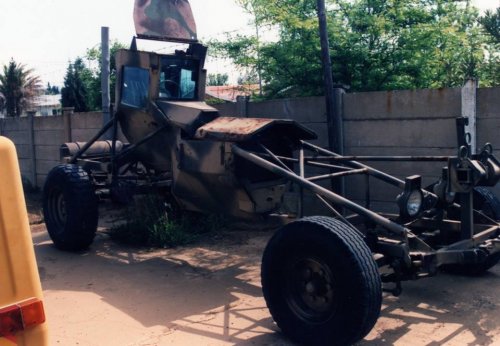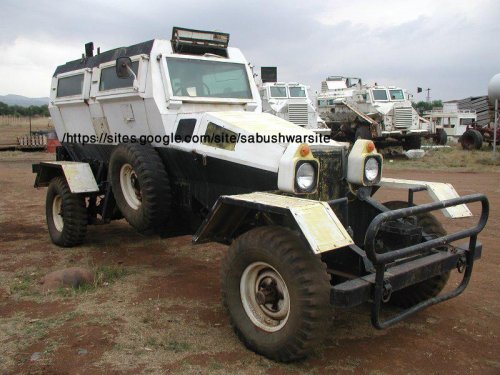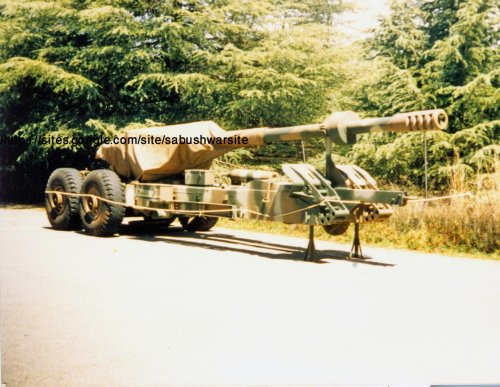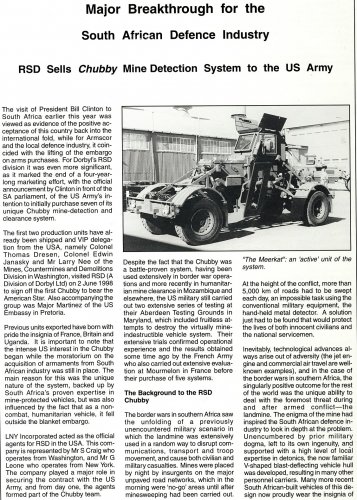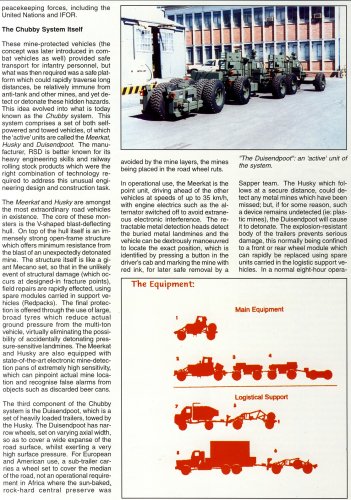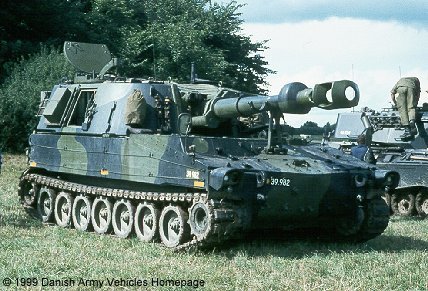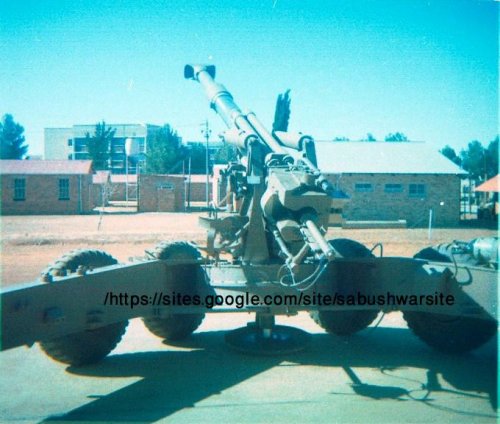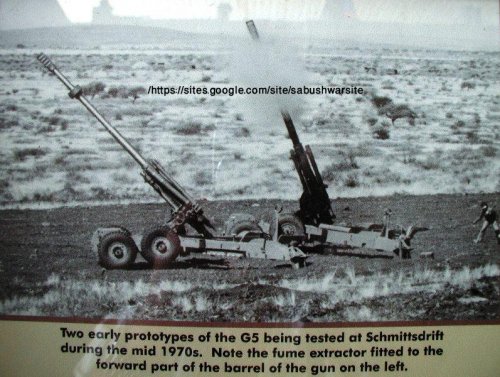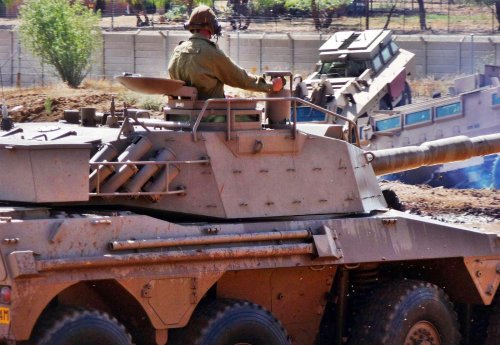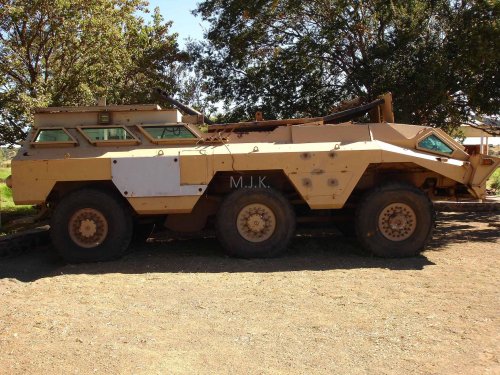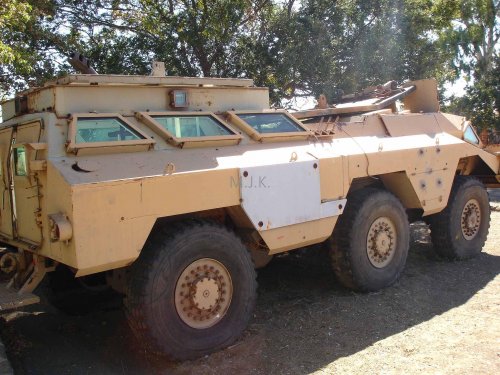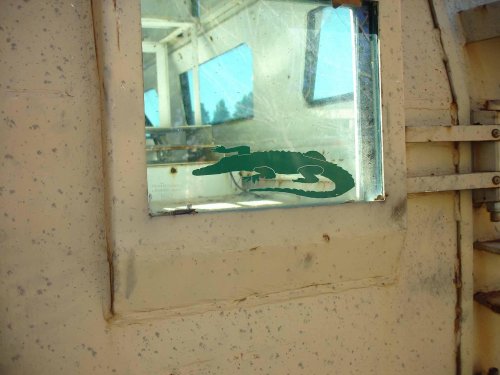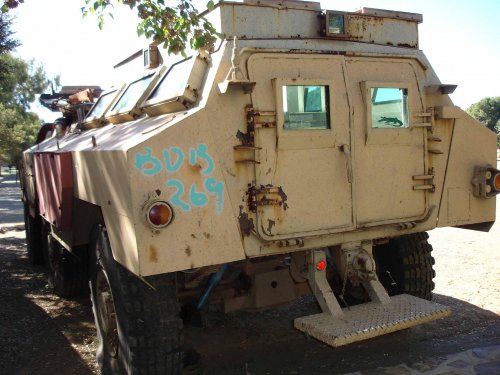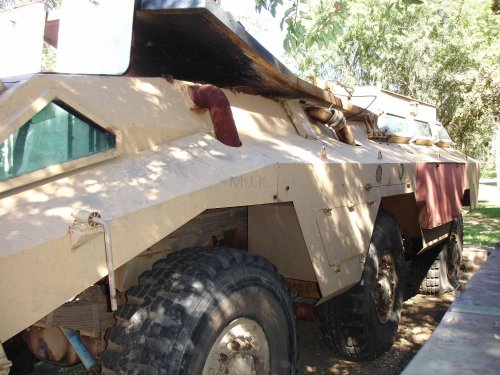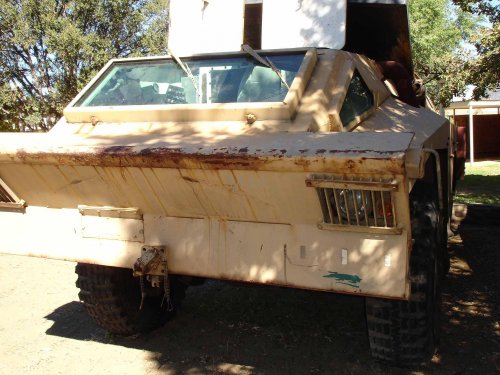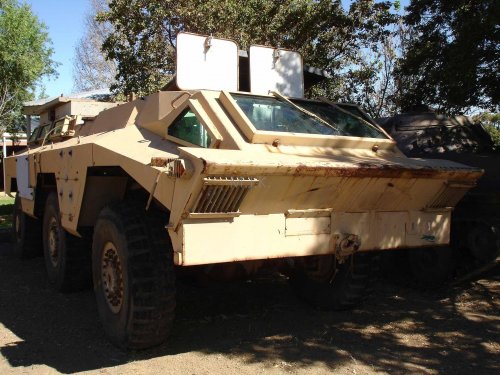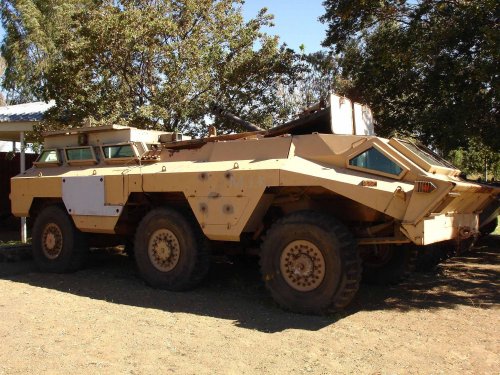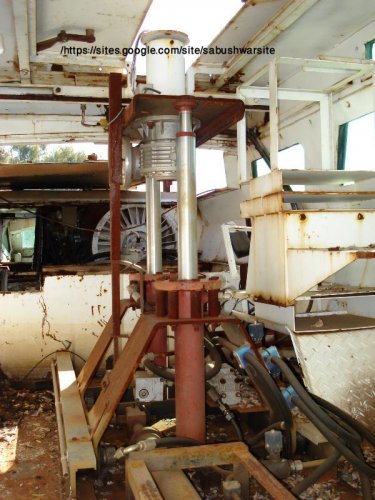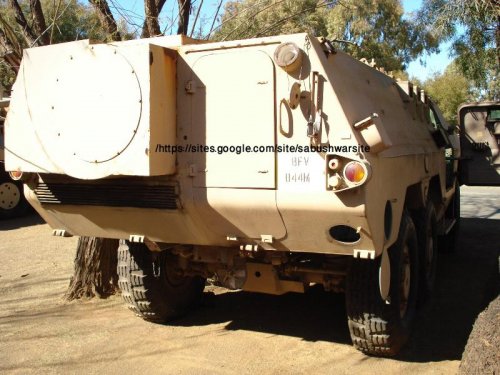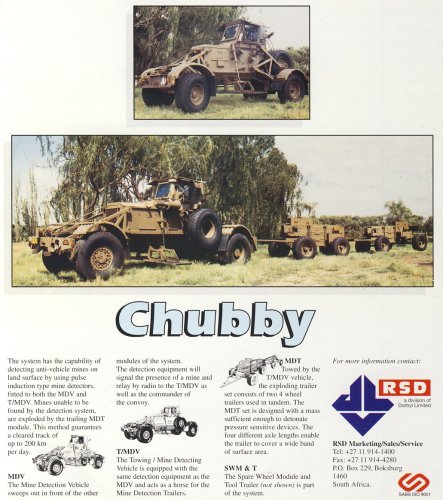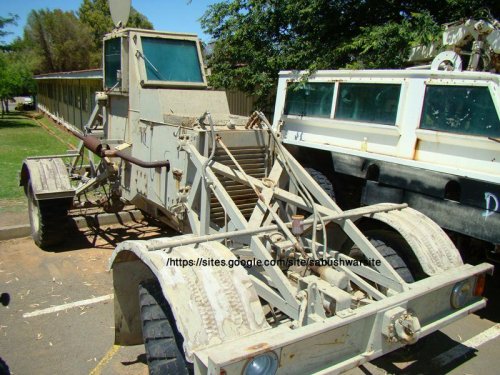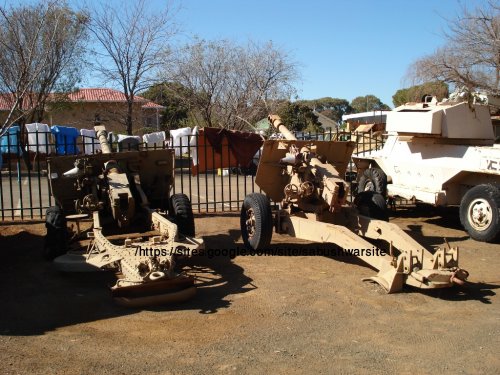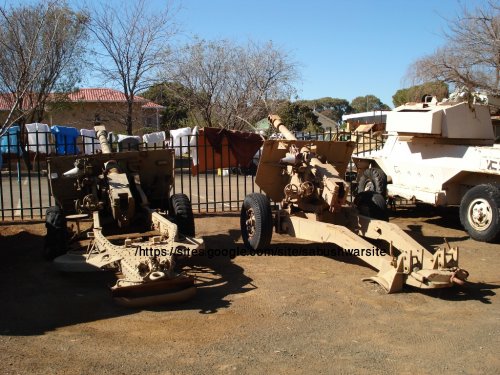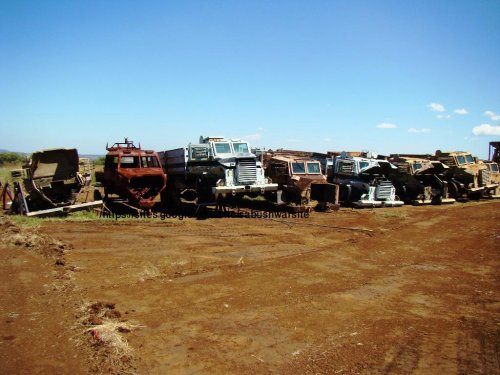You are using an out of date browser. It may not display this or other websites correctly.
You should upgrade or use an alternative browser.
You should upgrade or use an alternative browser.
South African prototypes, projects, concepts, etc.
- Thread starter kaiserbill
- Start date
- Joined
- 27 March 2006
- Messages
- 1,793
- Reaction score
- 1,308
Very interesting SA Bushwar.
I wonder though if that isn't a prototype for the Dorbyl Chubby/Meerkat/Husky?
If so, I wonder where it puts that earlier pic of yours that looks also to be part of the lineage.
Mechem did the Spinnekop, so I assume their earlier vehicle "Gees" would have looked different from the Dorbyl line?
I'm beginning to think, as I alluded to earlier, that there was a mine detection vehicle programme that both Dorbyl and Mechem tendered their entries into.
I wonder though if that isn't a prototype for the Dorbyl Chubby/Meerkat/Husky?
If so, I wonder where it puts that earlier pic of yours that looks also to be part of the lineage.
Mechem did the Spinnekop, so I assume their earlier vehicle "Gees" would have looked different from the Dorbyl line?
I'm beginning to think, as I alluded to earlier, that there was a mine detection vehicle programme that both Dorbyl and Mechem tendered their entries into.
sa_bushwar
ACCESS: Secret
sa_bushwar
ACCESS: Secret
Know to little about the mine detection vehicles to comment...
kaiserbill said:Very interesting SA Bushwar.
I wonder though if that isn't a prototype for the Dorbyl Chubby/Meerkat/Husky?
If so, I wonder where it puts that earlier pic of yours that looks also to be part of the lineage.
Mechem did the Spinnekop, so I assume their earlier vehicle "Gees" would have looked different from the Dorbyl line?
I'm beginning to think, as I alluded to earlier, that there was a mine detection vehicle programme that both Dorbyl and Mechem tendered their entries into.
sa_bushwar
ACCESS: Secret
Pre-production G5. Noticable are the smoke extractor and muzzle brake which are very different to the production models. Recalling seeing pre-production models being tested on the Genl. de la Rey artillery range in Potchefstroom in 1978.
Attachments
Graugrun
ACCESS: Top Secret
- Joined
- 17 May 2011
- Messages
- 744
- Reaction score
- 808
Kaiserbill - I had an in-depth multi-page Dorbyl brochure on the Chubby, sadly no longer - here's an article though out of Armed Forces magazine (Sept 1998), although not in great depth and with a bit of a nationalist stance.... Still it does give you some background info.
Attachments
- Joined
- 27 March 2006
- Messages
- 1,793
- Reaction score
- 1,308
Thanks once again, Graugrun. A most excellent read.
So the Meerkat and Husky are two different vehicles part of the Chubby.
Still, when one looks at various pictures, there are quite a few vehicle variances as the system has developed.
The two pics SA Bushwar posted illustrates that. I'd love to know if these were prototype Meerkat and Husky vehicles, or developments thereof.
Also interesting is that an earlier "duisendpoort" mine detonating trailer that could be towed by vehicles such as the Buffel APC is shown in Helmoed Romer Heitmans SA Arms & Armour.
It would be interesting also to know more of that Mechem "Gees" vehicle that preceded their Spinnekop.
As I was musing on earlier, There seems to have been a mine detection vehicle programme in the (late?) 70's that resulted in the Spinnekop (Mechem) and Chubby (Dorbyl DCD) system, with the Dorbyl system winning out in the end.
Speculation on my part.
SA Bushwar, thanks for that very interesting G-5 prototype pic.
I'm not sure if my memory is playiing tricks on me, but that picture seems to have jogged my memory that I may have seen a similar circular bore excavator on a G-6 prototype/development vehicle...
So the Meerkat and Husky are two different vehicles part of the Chubby.
Still, when one looks at various pictures, there are quite a few vehicle variances as the system has developed.
The two pics SA Bushwar posted illustrates that. I'd love to know if these were prototype Meerkat and Husky vehicles, or developments thereof.
Also interesting is that an earlier "duisendpoort" mine detonating trailer that could be towed by vehicles such as the Buffel APC is shown in Helmoed Romer Heitmans SA Arms & Armour.
It would be interesting also to know more of that Mechem "Gees" vehicle that preceded their Spinnekop.
As I was musing on earlier, There seems to have been a mine detection vehicle programme in the (late?) 70's that resulted in the Spinnekop (Mechem) and Chubby (Dorbyl DCD) system, with the Dorbyl system winning out in the end.
Speculation on my part.
SA Bushwar, thanks for that very interesting G-5 prototype pic.
I'm not sure if my memory is playiing tricks on me, but that picture seems to have jogged my memory that I may have seen a similar circular bore excavator on a G-6 prototype/development vehicle...
sa_bushwar
ACCESS: Secret
LandNav Ratel. From the mid 1980's the SADF tested an early GPS system on some Ratels which was referred to as a LandNav system. I once saw a picture of Ratel with a small white circular disc-shaped antenna towards the back, claiming to be such a system. For the book I'm writing on the Bush War, I need some info, pictures, stories, specs about this system. Any help will be appreciated!
Attachments
- Joined
- 26 January 2011
- Messages
- 2,223
- Reaction score
- 492
sa_bushwar said:Pre-production G5. Noticable are the smoke extractor and muzzle brake which are very different to the production models. Recalling seeing pre-production models being tested on the Genl. de la Rey artillery range in Potchefstroom in 1978.
Are you sure that large cylinder on the barrel is a fume extractor? Looks more like a counter weight. I've never seen a fume extractor on a towed artillery piece.
Are you sure that large cylinder on the barrel is a fume extractor? Looks more like a counter weight. I've never seen a fume extractor on a towed artillery piece.
I also seem to remember that it was a counter weight.
I also seem to remember that it was a counter weight.
- Joined
- 18 March 2008
- Messages
- 3,532
- Reaction score
- 722
Herman said:Are you sure that large cylinder on the barrel is a fume extractor? Looks more like a counter weight. I've never seen a fume extractor on a towed artillery piece.
I also seem to remember that it was a counter weight.
The Israeli 155mm that the SADF acquired before the G5 had a fume extractor. It does make some sense for a towed gun especially if you have it emplaced because it clears smoke away from the breech when the weapon is reloaded. Also there is a design for a wide cylinder extractor like this as was seen on the early M109s. Counter weights would be fitted right at the muzzle brake for more moment arm.
- Joined
- 26 January 2011
- Messages
- 2,223
- Reaction score
- 492
Herman said:Yep; Isreali M71 howitzer (SA G4) apparently has a fume-extractor.
Thats one, out of how many weapons designed and produced? Still looks more like a counterweight to me.
Thats one, out of how many weapons designed and produced? Still looks more like a counterweight to me.
I agree. That thing on the barrel of the prototype G5 is a weight. There is a fume extractor on the barrel of the G6 and that looks like a fume extractor, not like an iron tyre slid onto the barrel!
I agree. That thing on the barrel of the prototype G5 is a weight. There is a fume extractor on the barrel of the G6 and that looks like a fume extractor, not like an iron tyre slid onto the barrel!
- Joined
- 18 March 2008
- Messages
- 3,532
- Reaction score
- 722
Herman said:I agree. That thing on the barrel of the prototype G5 is a weight. There is a fume extractor on the barrel of the G6 and that looks like a fume extractor, not like an iron tyre slid onto the barrel!
Neither of you offer anything close to a reasoned argument. No one fits counterweights to barrels that have muzzle brakes. Because the muzzle brake is a counterweight. And far from not looking like a fume extractor the wide cylinder is an established design of fume extractor.
Attachments
Neither of you offer anything close to a reasoned argument. No one fits counterweights to barrels that have muzzle brakes. Because the muzzle brake is a counterweight. And far from not looking like a fume extractor the wide cylinder is an established design of fume extractor.
Touché! I humbly withdraw my clearly uninformed comment. In my defence I would however like to quote Janes' Armour and Artillery (1981/82): "The ordnance has a multi-baffle muzzle brake with a large counterweight behind it". It is likely though that Janes' was also speculating and that the "counterweight" could indeed have been a bore-evacuator. If it was indeed a counter-weight, it would have nothing to do with the muzzle brake. It is more likely that the breech and attendant recoil mechanism was too heavy (or the trunnions too far forward), causing a rearweard balance bias. The counterweight would then make laying easier. Pure speculation on my part.
Touché! I humbly withdraw my clearly uninformed comment. In my defence I would however like to quote Janes' Armour and Artillery (1981/82): "The ordnance has a multi-baffle muzzle brake with a large counterweight behind it". It is likely though that Janes' was also speculating and that the "counterweight" could indeed have been a bore-evacuator. If it was indeed a counter-weight, it would have nothing to do with the muzzle brake. It is more likely that the breech and attendant recoil mechanism was too heavy (or the trunnions too far forward), causing a rearweard balance bias. The counterweight would then make laying easier. Pure speculation on my part.
Reply to post #1106.
Just an additional comment: the wheel-like fume extractor on the M109 self-propelled gun was the result of the short barrel; there simply wasn't space for a longer one. If one looks at later, longer barrelled versions of the same vehicle, (M109A1 and the Oto-Melara modified version of the vehicle, for instance), they all have conventional, tubular fume extractors. I still think it is a counterweight.
Just an additional comment: the wheel-like fume extractor on the M109 self-propelled gun was the result of the short barrel; there simply wasn't space for a longer one. If one looks at later, longer barrelled versions of the same vehicle, (M109A1 and the Oto-Melara modified version of the vehicle, for instance), they all have conventional, tubular fume extractors. I still think it is a counterweight.
- Joined
- 18 March 2008
- Messages
- 3,532
- Reaction score
- 722
OK, time to put this to bed. Janes is just wrong, they often are. Those big tubes on either side of the gun barrel (not the ones above and below the barrel) that are on a slight angle are the balancing gear. What they do is the exact opposite of a counter weight at the end of the barrel. They hold the ordnance up so the much higher weight of the ordnance north of the trunnions is balanced. With a field howitzer designed for high elevation with a long barrel there is absolutely no need for a counter weight. Adding additional weight at the end of the barrel is just insane as it requires you to make your balancing gear stronger. If anything the designers of the G5 would have removed the fume extractor to save weight at the end of the barrel’s moment arm.
- Joined
- 18 March 2008
- Messages
- 3,532
- Reaction score
- 722
Herman said:Just an additional comment: the wheel-like fume extractor on the M109 self-propelled gun was the result of the short barrel; there simply wasn't space for a longer one.
Not true. There is plenty of space for a conventional slime line fume extractor on the M109. The Soltam M68 with a similar short barrel has such a fume extractor. Its just a type of design.
sa_bushwar
ACCESS: Secret
Yes it had, here is a G4 at the School of Artillery in Potch, 1883.
Herman said:Yep; Isreali M71 howitzer (SA G4) apparently has a fume-extractor.
Attachments
sa_bushwar
ACCESS: Secret
To continue the debate, see the quote with the picture below...Cannot confirm 100%, but what I have been told, it is a fume extractor.
Herman said:Thats one, out of how many weapons designed and produced? Still looks more like a counterweight to me.
I agree. That thing on the barrel of the prototype G5 is a weight. There is a fume extractor on the barrel of the G6 and that looks like a fume extractor, not like an iron tyre slid onto the barrel!
Attachments
- Joined
- 27 March 2006
- Messages
- 1,793
- Reaction score
- 1,308
A while back a poster posted those pics of the 8x8 that we think is the Springkaan entry into the original Ratel programme.
Another poster then posted a pic that had long been available showing the same vehicle in the backround whilst other more common vehicles were tested in the foreground.
That vehicle had been assumed to be a Saracen until the poster noticed its 8x8 configuration and had a closer look.
Anyway, mirroring that story, this pic has been under my nose for about 4 or 5 years, which just goes to show that brief glimpses of some of these rarer prototype vehicles are out there, often in the backround ...
Another poster then posted a pic that had long been available showing the same vehicle in the backround whilst other more common vehicles were tested in the foreground.
That vehicle had been assumed to be a Saracen until the poster noticed its 8x8 configuration and had a closer look.
Anyway, mirroring that story, this pic has been under my nose for about 4 or 5 years, which just goes to show that brief glimpses of some of these rarer prototype vehicles are out there, often in the backround ...
Attachments
Graugrun
ACCESS: Top Secret
- Joined
- 17 May 2011
- Messages
- 744
- Reaction score
- 808
Just to follow up on your pic above Kaiserbill (as well as my own and other peoples previous posts), some more pics of Krokadil (my own pics), I took them at the School of Armour about 6 years ago.
Attachments
sa_bushwar
ACCESS: Secret
Here is a picture of the guts of the vehicle.
Graugrun said:Just to follow up on your pic above Kaiserbill (as well as my own and other peoples previous posts), some more pics of Krokadil (my own pics), I took them at the School of Armour about 6 years ago.
Attachments
sa_bushwar
ACCESS: Secret
I suspect there are 2 of these vehicles in Bloem, the one is parked (used to be) next to the parade ground, and at some stage I also saw the one parked on the incline just outside the museum terrain in the army base, on what looks like a tank/Ratel driving range.
sa_bushwar said:Here is a picture of the guts of the vehicle.
Graugrun said:Just to follow up on your pic above Kaiserbill (as well as my own and other peoples previous posts), some more pics of Krokadil (my own pics), I took them at the School of Armour about 6 years ago.
Very interesting, Graugrun and Bushwar! One can see why the thing is called the Krokodil; it must be over 8 meters long. The inside photo is also very interesting. It shows that the driver sat in front with the engine compartment behind him, on the right. The powerplant was a Deutz air-cooled engine, probably the F10L413 also used in the Samil 100. The reason for the Deutz is probably because the engine is less tall (not as high) than the inline 6 cylinder unit used in the Ratel. The Krokodil is therefore (aside from being ugly) an interesting hybrid vehicle, having Ratel axles but suspended on leaf springs, like the Samil trucks, and fitted with a Samil engine.
- Joined
- 27 March 2006
- Messages
- 1,793
- Reaction score
- 1,308
I'd be quite interested to know more about the "ceramic armour" part of this Krokodil vehicle.
sa_bushwar
ACCESS: Secret
Apparently overheating was a problem in the early models, especially when off-road and bundu bashing. Can anyone confirm?
I cannot confirm that the box on the back of the Ratel is indeed an additional fan but it seems highly likely. When the first model of the Ratel was modified to become the Ratel 2, one of the things modified was reported to be the cooling system. Cooling was therefore apparently an issue.
I cannot confirm that the box on the back of the Ratel is indeed an additional fan but it seems highly likely. When the first model of the Ratel was modified to become the Ratel 2, one of the things modified was reported to be the cooling system. Cooling was therefore apparently an issue.
- Joined
- 27 March 2006
- Messages
- 1,793
- Reaction score
- 1,308
Herman said:Apparently overheating was a problem in the early models, especially when off-road and bundu bashing. Can anyone confirm?
I cannot confirm that the box on the back of the Ratel is indeed an additional fan but it seems highly likely. When the first model of the Ratel was modified to become the Ratel 2, one of the things modified was reported to be the cooling system. Cooling was therefore apparently an issue.
In the Ratel replacement thread, there is another shot from a different angle showing this vehicle with "LOBO" spraypainted onto it.
The attachment Graugrun posted states that one of the goals of "LOBO", amongst other technologies, was "Evaluation of cooling, intercooling, and air conditioning systems".
"Evaluation of cooloing, intercooling, and air conditioning systems".
The original Bussing engine of the Ratel was a turbocharged unit without intercooling. This developed 282hp. An intercooled version of the engine became available a few years later. This developed 320hp. It may that their was some experimentation to modify the engines to the more powerful version.
The original Bussing engine of the Ratel was a turbocharged unit without intercooling. This developed 282hp. An intercooled version of the engine became available a few years later. This developed 320hp. It may that their was some experimentation to modify the engines to the more powerful version.
- Joined
- 27 March 2006
- Messages
- 1,793
- Reaction score
- 1,308
Thanks Graugrun.
That illustrates it a lot better.
I'd thought that one was an earlier variant of the other, but they're a complementary and contemporary part of a system.
That illustrates it a lot better.
I'd thought that one was an earlier variant of the other, but they're a complementary and contemporary part of a system.
sa_bushwar
ACCESS: Secret
Hopefully this one in Bloem will be restored one day...
Graugrun said:Just back to Chubby quickly - advert showing both Meercat and Husky vehicles.
Attachments
sa_bushwar
ACCESS: Secret
sa_bushwar said:I have seen these modified 25pdrs at the SAAF Museum Swartkops and Armour Museum in Bloem. Was it an upgrade, or testbed for the development of the G5 gun carriage? See early G5 prototype below.
Attachments
sa_bushwar
ACCESS: Secret
Side by side comparison of the original 25pdr (G1), and the modified gun carriage.
sa_bushwar said:I have seen these modified 25pdrs at the SAAF Museum Swartkops and Armour Museum in Bloem. Was it an upgrade, or testbed for the development of the G5 gun carriage? See early G5 prototype below.
Attachments
- Joined
- 27 March 2006
- Messages
- 1,793
- Reaction score
- 1,308
Gunshield is different too.
What was the plan with this, I wonder?
Also, I'm having difficulty finding info on the Ratel IV with the side mounted engine, as posted earlier.
What was the plan with this, I wonder?
Also, I'm having difficulty finding info on the Ratel IV with the side mounted engine, as posted earlier.
sa_bushwar
ACCESS: Secret
- Joined
- 27 March 2006
- Messages
- 1,793
- Reaction score
- 1,308
Except for the two vehicles on the left, those are Casspirs, or more accurately, the supply version called the Blesbok.
What are those two vehicles on the left?
Wolf?
Whereabouts is this place?
What are those two vehicles on the left?
Wolf?
Whereabouts is this place?
Similar threads
-
-
South African artillery/cannon/guns - prototypes, projects, concepts etc.
- Started by Graugrun
- Replies: 126
-
-
South African small to medium calibre weapon prototypes, concepts, projects etc.
- Started by Graugrun
- Replies: 134
-
African prototypes and projects (without South Africa)
- Started by Maveric
- Replies: 2

